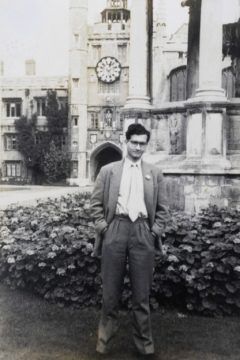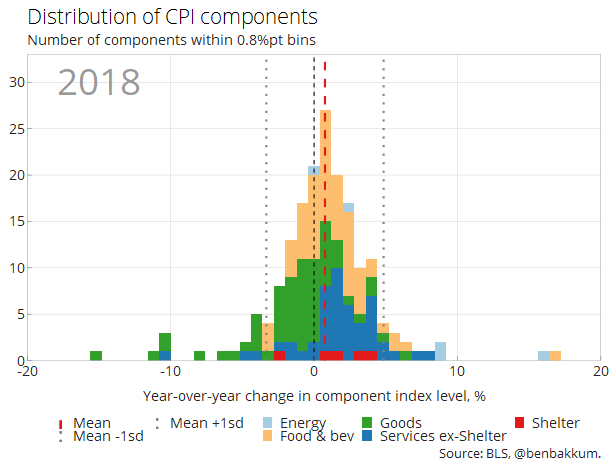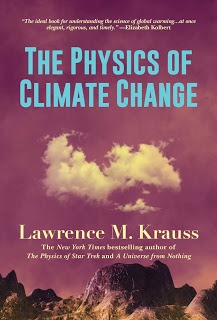Benjamin Moser in Urubuquaquá:
 Five years ago this month, I attended the Palestine Festival of Literature, an initiative of the Egyptian writer Ahdaf Souief. She is one of the people I admire the most in this world—a kind woman, a wonderful writer, and someone who has found a way to do something many artists wish we could do, or wish we could do better: make some impact in the “real world,” which is to say: in real people’s lives.
Five years ago this month, I attended the Palestine Festival of Literature, an initiative of the Egyptian writer Ahdaf Souief. She is one of the people I admire the most in this world—a kind woman, a wonderful writer, and someone who has found a way to do something many artists wish we could do, or wish we could do better: make some impact in the “real world,” which is to say: in real people’s lives.
Because here’s the thing. Compared to the real world of banks and armies and governments, your little novel, your evocative sculpture, your lachrymose ballad, will never really feel that important.
It’s true that we do these things because, in a way we can’t quite articulate, we feel that books and paintings and songs are more important than banks or armies or governments: that in some mysterious way, art and ideas move the world. We believe this, but it always feels grandiose, since the results are so hard to see.
I don’t know any writer who has devoted as much of her time and energy to activism as Ahdaf has. At PalFest, international writers—mainly from the English-speaking world—come together with Palestinian and Arab writers. That could happen in Lyon or Berkeley or Milan or, these days, on Zoom. But what’s unique about PalFest is that it shows you the situation. And the situation is very hard to see, even for people who want to.
More here.

 I first saw
I first saw  Coming from a long line of Hindu intellectuals and teachers, Amartya Sen enjoyed advantages and freedoms that few others did in a deeply-stratified India of the 1930s, during the waning days of the British empire. Teaching was in his blood, and from an early age, Sen was struck by the stark economic inequities he saw all around him under the British raj. Identifying and understanding the causes and effects that inequalities, like those surrounding poverty or gender, had on people’s lives would become a lifelong intellectual lodestar for the political economist, moral philosopher, and social theorist. Many economists focus on explaining and predicting what is happening in the world. But Sen, considered the key figure at the convergence of economics and philosophy, turned his attention instead to what the reality should be and why we fall short. “I think he’s the greatest living figure in normative economics, which asks not ‘What do we see?’ but ‘What should we aspire to?’ and ‘How do we even work out what we should aspire to?’” said Eric S. Maskin ’72, Ph.D. ’76, Adams University Professor and professor of economics and mathematics.
Coming from a long line of Hindu intellectuals and teachers, Amartya Sen enjoyed advantages and freedoms that few others did in a deeply-stratified India of the 1930s, during the waning days of the British empire. Teaching was in his blood, and from an early age, Sen was struck by the stark economic inequities he saw all around him under the British raj. Identifying and understanding the causes and effects that inequalities, like those surrounding poverty or gender, had on people’s lives would become a lifelong intellectual lodestar for the political economist, moral philosopher, and social theorist. Many economists focus on explaining and predicting what is happening in the world. But Sen, considered the key figure at the convergence of economics and philosophy, turned his attention instead to what the reality should be and why we fall short. “I think he’s the greatest living figure in normative economics, which asks not ‘What do we see?’ but ‘What should we aspire to?’ and ‘How do we even work out what we should aspire to?’” said Eric S. Maskin ’72, Ph.D. ’76, Adams University Professor and professor of economics and mathematics.
 Ben Bakkum in Macro Chronicles:
Ben Bakkum in Macro Chronicles: The Bone House, published in 2005, is either a decade’s work or a lifetime’s, depending on how you look at it. It is the distillation of an expansive mind that seeks to delve and delve. Her tone is never didactic—rather, discursive, exploratory, delighted, unjaded, alive. To read more than a few pages at a stretch is to travel a long way from where you set out. Sometimes to travel so far as to lose the view of the mountain, only to be brought back via an unfamiliar face of it.
The Bone House, published in 2005, is either a decade’s work or a lifetime’s, depending on how you look at it. It is the distillation of an expansive mind that seeks to delve and delve. Her tone is never didactic—rather, discursive, exploratory, delighted, unjaded, alive. To read more than a few pages at a stretch is to travel a long way from where you set out. Sometimes to travel so far as to lose the view of the mountain, only to be brought back via an unfamiliar face of it. Gödel could go for long walks with his fellow institute scholar Einstein, who sponsored Gödel’s citizenship application and called him the greatest logician since Aristotle, but he was wracked by physical ailments and nervous conditions. A doctor told him he had a bleeding ulcer, which he strangely refused to believe, even though he was also a self-medicating hypochondriac. He subscribed to all sorts of conspiracy theories, insisting that “nothing happens without a reason,” and that the reason was almost always a hidden one. The unlimited freedom he had at the institute proved to be double-edged, Budiansky observes. In one sense, it saved Gödel’s life; but it also allowed his consciousness to wander into the darkest places, without the checks on his expansive anxieties that interactions with the ordinary world might have otherwise provided.
Gödel could go for long walks with his fellow institute scholar Einstein, who sponsored Gödel’s citizenship application and called him the greatest logician since Aristotle, but he was wracked by physical ailments and nervous conditions. A doctor told him he had a bleeding ulcer, which he strangely refused to believe, even though he was also a self-medicating hypochondriac. He subscribed to all sorts of conspiracy theories, insisting that “nothing happens without a reason,” and that the reason was almost always a hidden one. The unlimited freedom he had at the institute proved to be double-edged, Budiansky observes. In one sense, it saved Gödel’s life; but it also allowed his consciousness to wander into the darkest places, without the checks on his expansive anxieties that interactions with the ordinary world might have otherwise provided. W
W Just over five years ago, Inky the octopus became a folk hero because of his escape from a New Zealand aquarium. After squeezing through a narrow chink in his tank, he crawled across the floor and found an opening to a 164-foot-long drainpipe that led to the ocean. As much as I enjoyed the film based on Stephen King’s “The Shawshank Redemption”, which climaxes in Tim Robbin’s daring prison break, I only wish that a gifted animation team like the one that made “How to Train Your Dragon” could tell Inky’s story.
Just over five years ago, Inky the octopus became a folk hero because of his escape from a New Zealand aquarium. After squeezing through a narrow chink in his tank, he crawled across the floor and found an opening to a 164-foot-long drainpipe that led to the ocean. As much as I enjoyed the film based on Stephen King’s “The Shawshank Redemption”, which climaxes in Tim Robbin’s daring prison break, I only wish that a gifted animation team like the one that made “How to Train Your Dragon” could tell Inky’s story. In Delhi, Shahid also became aware of the city’s Mughal and colonial history, and was impressed by its architecture. In the early ’60s, the Mexican poet Octavio Paz had visited New Delhi and had been charmed by its architecture. He wrote numerous poems about the city and about all that he had witnessed here. He found Delhi’s “aesthetic equivalent” in “novels, not in architecture”, and to him, wandering the city was “like passing through the pages of Victor Hugo, Walter Scott, or Alexandre Dumas”.
In Delhi, Shahid also became aware of the city’s Mughal and colonial history, and was impressed by its architecture. In the early ’60s, the Mexican poet Octavio Paz had visited New Delhi and had been charmed by its architecture. He wrote numerous poems about the city and about all that he had witnessed here. He found Delhi’s “aesthetic equivalent” in “novels, not in architecture”, and to him, wandering the city was “like passing through the pages of Victor Hugo, Walter Scott, or Alexandre Dumas”. In the past years, media coverage of climate change has noticeably shifted. Many outlets have begun referring to it as “climate crisis” or “climate emergency”, a mostly symbolic move, in my eyes, because those who trust that their readers will tolerate this nomenclature are those whose readers don’t need to be reminded of the graveness of the situation. Even more marked has been the move to no longer mention climate change skeptics and, moreover, to proudly declare the intention to no longer acknowledge even the existence of the skeptics’ claims.
In the past years, media coverage of climate change has noticeably shifted. Many outlets have begun referring to it as “climate crisis” or “climate emergency”, a mostly symbolic move, in my eyes, because those who trust that their readers will tolerate this nomenclature are those whose readers don’t need to be reminded of the graveness of the situation. Even more marked has been the move to no longer mention climate change skeptics and, moreover, to proudly declare the intention to no longer acknowledge even the existence of the skeptics’ claims. To those who still harbor doubts about the justness of this war, who continue to question the scientific consensus on global warming and the ravages it promises, I ask only that you entertain, if there is a chance you are right, that there is also a chance you are wrong. Let us even say, for argument’s sake, that the virtual certainty of scientists were reduced to 50 percent confidence and the forecasted effects of climate violence were reduced in severity by 50 percent as well. That would still justify the most massive mobilization of human energy and resources the world has ever seen, because the likely outcome would still be far worse than any threat we have faced in the past.
To those who still harbor doubts about the justness of this war, who continue to question the scientific consensus on global warming and the ravages it promises, I ask only that you entertain, if there is a chance you are right, that there is also a chance you are wrong. Let us even say, for argument’s sake, that the virtual certainty of scientists were reduced to 50 percent confidence and the forecasted effects of climate violence were reduced in severity by 50 percent as well. That would still justify the most massive mobilization of human energy and resources the world has ever seen, because the likely outcome would still be far worse than any threat we have faced in the past.